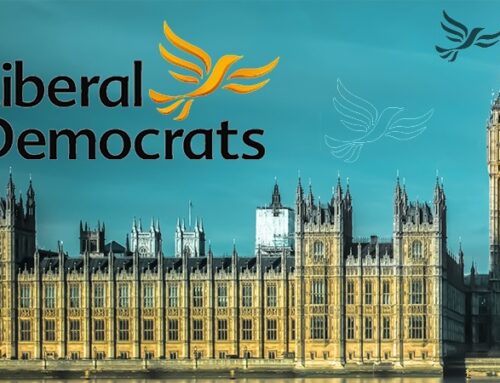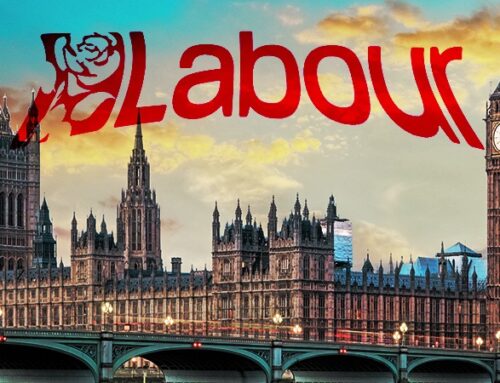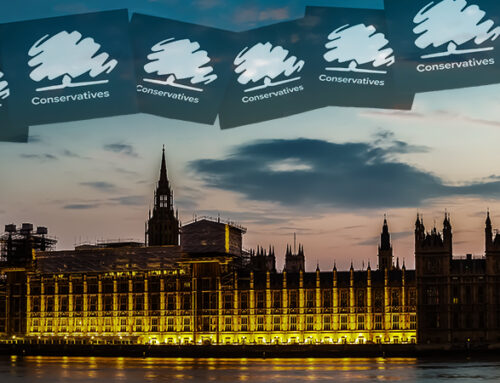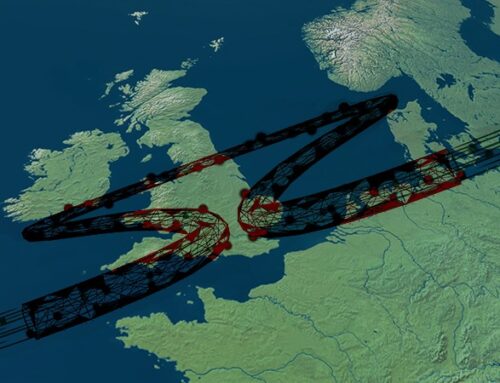Last week the a House of Commons Committee heard from the heads of some of the country’s leading energy suppliers of their concerns for increased fuel poverty next winter as the energy crisis deepens, amid calls for the introduction of a social energy tariff. The Business, Energy & Industrial Strategy Committee’s Energy pricing and the future of the Energy Market inquiry heard from Keith Anderson (CEO of ScottishPower), Michael Lewis (CEO of E.On UK), Simone Rossi (CEO of EDF Energy) and Chris O’Shea (CEO of Centrica) about the levels of bad debts they expect to see from their customers as the price cap will certainly rise again in the autumn.

Some 30-40% of consumers are expected to fall into fuel poverty in October when the price cap next rises, while analysis from Cornwall Insight indicates that average annual UK electricity prices will remain above £100 /MWh until at least 2030, compared with an average winter price over the past 5 years of £50 /MWh (and less in summer). The research cites the retirement of coal and aging nuclear plant in Britain as well as the moves away from Russian gas in the European markets as factors supporting higher prices over the medium term. The remedies will be increased capacity margins and more energy storage, for example from hydrogen, but as capacity margins are declining and hydrogen is some way away (and will be expensive), there are no realistic prospects for prices to fall back to historic norms earlier than the end of the decade.
Chewing on the challenges of the retail market
The CEOs were in agreement that the measures announced by the Government in February will fall far short of what will be needed following the impact of the war in Ukraine, and called for further measures to be deployed as a matter of urgency. There were also calls for the price cap to be replaced with a social tariff directed at the most vulnerable consumers as a second step. Measures favoured by the group included moving green levies to general taxation, VAT relief and an expansion of the Warm Homes Discount.
“The cap should be changed to be a social tariff, targeted to discount the price to people in poverty. Right now, people on a prepayment meter pay more, and that is perverse. A social tariff should be brought in to discount the price for people in fuel poverty and those on prepayment,”
– Keith Anderson, CEO, ScottishPower
The CEOs went on to explain increases in standing charges which have been causing concern among consumer groups. The standing charge component of energy bills is incurred on a per meter per day basis and is independent of consumption. This means that regardless of any energy saving measures consumers may attempt, these charges still arise, and they have been growing. The reasons for the increases is that the standing charges are used to recover the costs incurred as a result of the supplier failures over the past year. Chris O’Shea has called for 4 distinct measures to be taken to protect consumers from such costs in future:
- Suppliers should ring-fence consumer credit balances – Centrica is already doing this but the other suppliers represented at the meeting do not;
- Fit-and-proper tests for people running energy suppliers, similar to those in the financial services sector;
- Capital adequacy requirements for suppliers: according to O’Shea, 51 suppliers have failed in the last four and a bit years taking £500 million of customers’ money with them; and
- A requirement for the Insolvency Service to pursue the managers and directors of failed suppliers as a deterrent to future bad management.
Of course, another area of concern was the lack of supply-side measures in the Energy Security Strategy. While the CEOs and Committee members were all very supportive of the new off-shore wind targets (despite the fact they will certainly increase costs to consumers or taxpayers), there was a recognition that the strategy failed to address near-term concerns and that the country is still lacking a meaningful energy efficiency policy.
“Our concern with the energy security strategy is that it was actually an energy supply strategy, and we also need an energy demand strategy—in other words, energy efficiency. For us, that was the big gap. These are things that we can do quickly. These are things that we can ramp up for vulnerable customers very quickly. We were very disappointed that the Government did not address that directly, because that is the silver bullet for solving some of our short-term energy problems—a massive investment in energy efficiency. We have far too many poorly insulated homes in the UK—the worst in Europe—and we do not have a coherent approach to upgrading them,”
– Michael Lewis, CEO, E.On UK
Finally, the Committee members challenged the CEOs on competition in the industry and why their companies had not been competing more effectively. Each of the CEOs tried to answer this question – the MPs wanted to hear about innovation and new business models, which the CEOs were not offering – but not one of them had the courage to give the real answer: in a market with structurally low or negative profit margins there is simply no incentive to innovate: the risks are too great. If MPs want to see the emergence of new and innovative business models in the energy sector, they need to reduce the regulatory burden and accept energy companies being able to earn decent profits. Since neither of these is likely to happen, the emergence of genuinely new and exciting models will be extremely limited, and potential new entrants from other sectors will remain reluctant to enter the market.
Does Britain need a social energy tariff?
A social tariff is one below normal market levels which is available to a sub-set of low-income consumers. It can be funded through taxation or through the bills of all other consumers (or a combination of the two). This is different to a price cap since the cap covers all consumers and is set at the regulator’s view of a fair market price whereas a social tariff would be below the fair market price so that low-income consumers receive subsidised energy.
Belgium is one country which has adopted a social tariff model. The tariff applies across the whole country, regardless of the provider or network manager, with around 1 million households benefitting. It is calculated twice a year by the federal regulator for energy (CREG), on the basis of the lowest commercial energy prices, and is granted automatically, based on the administrative data held by the relevant federal or regional services. This automatic grant system ensures that everyone who is entitled to pay the social tariff receives it.
In February last year the federal government widened access to the social tariff to include pensioners, single-parent families experiencing financial difficulties, and anyone with a gross annual income of €20,000 or less. In addition to expanding the social tariff, the government decided to grant energy vouchers worth €80 each to help the most disadvantaged households deal with energy price rises, while households that do not qualify from the social tariff can receive assistance from public social welfare centres to negotiate with suppliers or install energy saving measures.
A further €1.1 billion package was announced in February this year to help households with rising electricity prices: VAT on electricity was reduced from 21% to 6% for a four-month period beginning on 1 March, and all households will receive a one-off payment of €100 as a direct reduction on the electricity bill. The social tariff was extended until the end of June 2022. These new measures met with opposition due to high levels of public debt in the country.
Other countries in Europe have adopted a range of different approaches to the issue of high energy prices which is by no means unique to the UK, including talk of capping wholesale prices, although that idea seems to have more opponents than supporters and is unlikely to gain any traction in Britain (the reference for the table is: Sgaravatti, G., S. Tagliapietra, G. Zachmann (2021) ‘National policies to shield consumers from rising energy prices’, Bruegel Datasets, first published 4 November 2021, available at https://www.bruegel.org/publications/datasets/national-policies-to-shield-consumers-from-rising-energy-prices/).
I recently attended an event at which a speaker spoke highly of the Belgian social tariff, citing research I have been unable to locate that it has performed well. Providing low income households with discounted energy is likely to perform well if the objective is to ensure that such households have access to affordable energy…the question is, how the subsidy is funded and whether it is financially sustainable (and whether the “right” groups are targeted and able to access the subsidy).
However, if the estimates of our leading energy companies are correct, and as many as 40% of consumers fall into fuel poverty next winter, there is pressing need for action, and a social tariff has the benefit of being targeted towards those most in need. There are wrinkles to be ironed out: ensuring that suppliers, who do not have access to Government data on the identities of vulnerable consumers, offer the tariff to all those who are eligible, and ensuring that eligible prepayment consumers take up the offer, particularly if they do not have smart meters which can be adjusted remotely. When the £200 rebate was announced in February, many people observed that they did not need it and wanted to either decline it or pass it to others in need – that is not currently possible, although such consumers can always donate an equivalent sum to an energy poverty charity (the Fuel Bank Foundation operates a scheme providing credit for prepayment meters on a similar basis to food banks).
Fuel poverty matters in two main ways. The first is social: people in fuel poverty struggle to heat their homes, which results in excess deaths among the vulnerable who are less able to cope with low temperatures (and issues with damp which are often also present). Even where the problems are not life-threatening, fuel poverty creates significant hardship where vulnerable consumers seek to self-ration in order to make their energy budget last. The increases in standing charges noted above make this more difficult than ever. The second problem is economic: as more people fall into fuel poverty, bad debts in the energy sector will rise, putting further pressure on suppliers whose business models are already stretched. The larger suppliers have been busy increasing their bad debt provisions and boosting their hardship funds for consumers, but smaller suppliers may struggle. If more suppliers fail as a result, the problems of SOLRs adding further costs onto bills will continue.
So I would be in favour of a social tariff, to be implemented ahead of next winter, and would like to see it funded through taxation. The reason for this is that people who are not quite poor enough to qualify for the social tariff might be pushed into fuel poverty themselves by the additional charges, given the sheer magnitude of the numbers involved. This makes me believe that taxation would be a fairer means of funding such a tariff, and there are various areas of the energy sector which are likely to see increased tax revenues for the Treasury as the energy crisis continues, in particular VAT receipts (which I support removing only for domestic consumers), and UKCS income, which fell last year as oil prices declined, but which will now recover both with the increases in oil and gas prices, and the likely expansion of production.
Urgent policy action needed
The Government rushed out its Energy Security Strategy in response to the energy crisis which emerged last year and was exacerbated by the war in Ukraine, but the strategy fails to address the two post pressing policy areas: affordability and short-term security of supply. It is becoming very clear that this coming winter will see many more households falling into fuel poverty by whatever measure is used, and set against wider increases in the cost of living, the consequences are likely to be extremely serious. It is difficult to understate the impact this may have on vulnerable consumers, and a cold winter could see a significant increase in excess winter deaths associated with under-heated homes.
At the same time, winter capacity margins, particularly in electricity are worryingly low. The French nuclear situation increases the likelihood of Britain being a net exporter rather than a net importer, particularly to Continental Europe, while the Norwegian energy commission may restrict flows on its interconnector in response to rapid price increases in the country and historically low hydro levels. The reliability of the aging British nuclear fleet is declining, and the 2 GW West Burton A coal-fired power station is set to close in September. The T-1 capacity auction for this winter saw a 365 MW shortfall. Managed curtailment of industrial demand is a real possibility this winter, with an increased risk of blackouts if unexpected plant outages /trips occur at the wrong moment.
The problem of affordability is actually easy to solve in principle – the mechanisms for this exist, it is just a question of political will: taxes or Government borrowing could be increased, or funding taken from mother areas of the Government budget. The issue of security of supply is much harder to solve in the short term, but there are some actions that could be taken: West Burton A could be asked to stay open, the mothballed Calon CCGTs could be encouraged to re-open, and Drax could be persuaded to increase its declining coal operations. In fact, the coal closures should be halted at least until Hinkley Point C opens, since the marginal increase in emissions would be much less damaging than the risks of blackouts. However, while these measures would help, they may not solve the problem if Britain ends up exporting to France as a matter of course through the winter. High prices may have some benefit here by incentivising lower consumption, but, as we saw last autumn, energy intensive industries can perform essential functions in the economy, and restricting economic output is the least attractive means of managing capacity issues.
Either way, the Government will need to take decisive action if widespread hardship and capacity shortfalls are to be avoided.







When you call for VAT reductions to be solely for households, you may be forgetting two key points.
The first is that this will increase the tax distortion between energy consumption( currently 5% VAT) and many energy conservation measures, like double glazing and LED lighting ( currently 20% VAT).
The second is that almost all companies are able to pass on VAT costs( exceptions in parts of banking and insurance), so are likely to be unaffected by the precise rate of aVAT charged.
I get where your coming from and it has merit but there are so many subsides and benefits available to certain groups in society there is a danger here too many would disproportionately benefit from those who sit just the other side of the line.
On prices im a tad more hopeful that Octobers rise won’t be anywhere near as much as forecast given that UK NBP has prices have been slowly declining week on week to stand at lowest level since early Sept 21.
Your right on interconnectors both gas and electricity have been export mode the majority of the time even on days even to Norway. Although unless the Ukraine crisis resolves itself before Autumn its going to be interesting when we get a cold spell with no wind.
Finally we are rapidly rebuilding gas storage currently with it sitting at four times the level in 2021 already.
a social energy tariff is necessary in order to help those on low incomes or who are struggling to pay their energy bills….